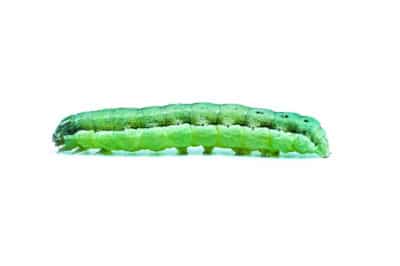Beet Armyworm Basics
Originating in southeast Asia, the beet armyworm was first discovered in what is now Oregon around 1876. The worm may overwinter in Texas, Florida and Arizona. Larva feed on both flowers and leaves as well as fruits. They typically skeletonize the leaves and as they grow larger may eat large irregular holes in foliage. In addition, the larva may burrow into the center of a lettuce or the buds of cole crops.
How to Recognize Beet Armyworms
The egg mass has a fuzzy or cottony gray appearance. Larva go through five cycles (instars). Larva are pale green or yellow until the third instar, when they develop pale stripes. By the fourth instar, the larva are darker on the back with a dark stripe. Larva in the fifth instar may carry pink or yellow colors, stripes, dark spots and dashes as well as the primary green. The adult moth is a mottled gray or brown with a white spot.
Host Plants
Many plants can act as hosts for the beet armyworm, including:
- Asparagus
- Beans
- Beets
- Cole crops
- Corn
- Eggplant
- Lettuce
- Solanums
- Spinach
Field crops such as alfalfa, cotton, peanuts, safflower, sorghum and tobacco, and weeds may also be used as host plants. Cabbage, cotton and peppers are the most popular garden or crop plants. Redroot pigweed and sunflower are the most popular weeds. A beet armyworm infestation early in the growing period can cause serious damage to tomato plants.
Controlling the Beet Armyworm
A multi-pronged management program is most successful with beet armyworm. Pheromone traps are used to detect adult moths. Predators such as the tachinid fly Lespesia archippivora attack the eggs and small larva. Although insecticides are used, resistance is high in many areas. Neem products and petroleum oil are often successful when applied to foliage. Beneficial nematodes may be helpful in killing the pupae, which are found in the soil.
When dealing with any garden pest, organic techniques are often the first line of defense. Regular crop rotation, for example, helps stop the cycle if pests overwinter. Hand-picking can decrease caterpillar damage. Plants that are well-nourished are less susceptible to attack and more likely to survive. Keep your garden healthy with organic methods.
